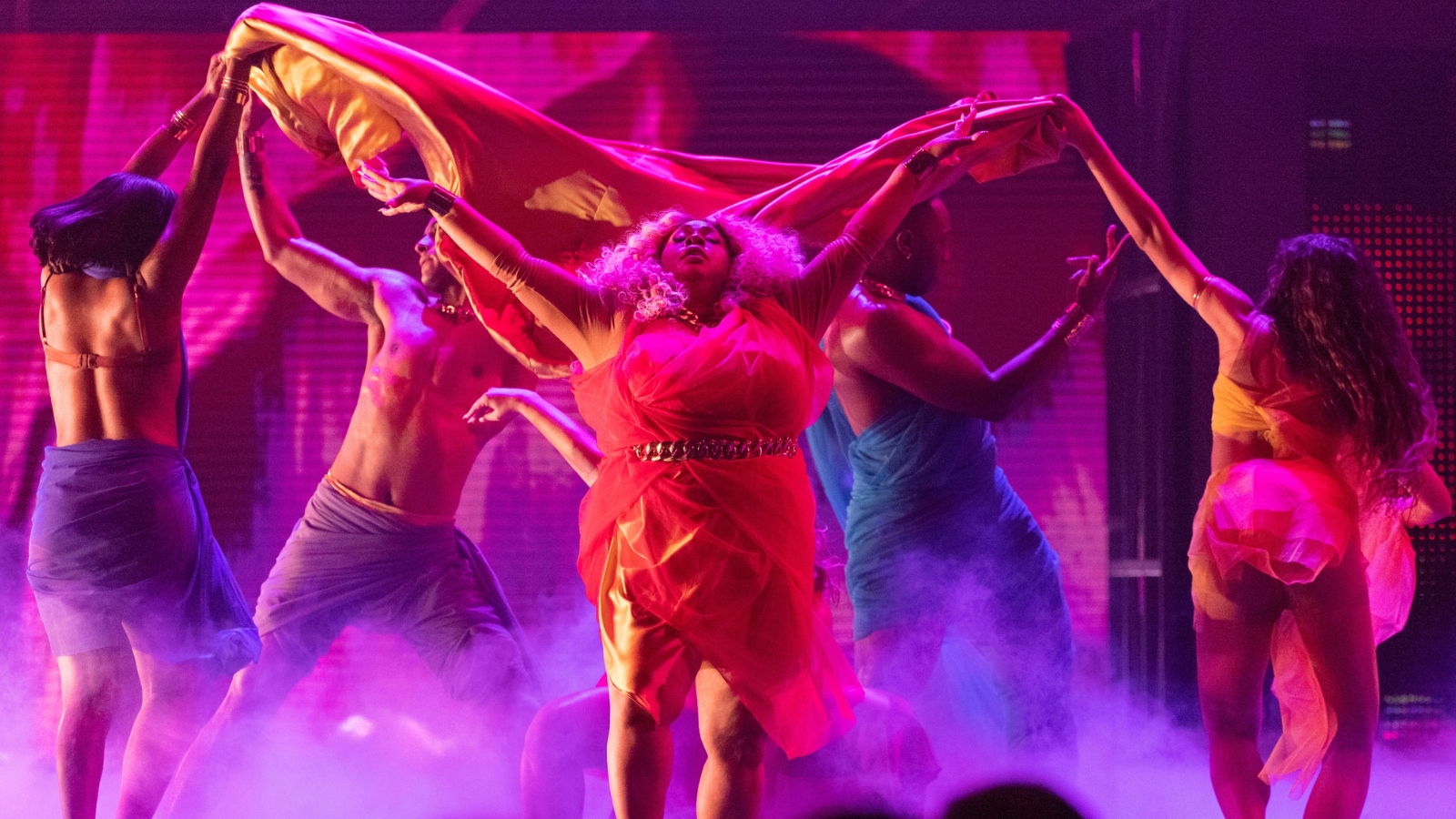Netflix’s ‘Dance 100’ Competition Series Does Nothing To Combat Fatphobia in the Dance Industry

Netflix’s new Dance 100 competition reality show takes an interesting approach to the medium. The six-episode series hosted by fitness influencer Ally Love premiered March 17, and it showcases eight up-and-coming choreographers whose work is judged by the dancers they work with each week. That’s not all. In every episode, the choreographers get a larger group of dancers until the two finalists are tasked with creating a routine for all 100 of the professional dancers hired for the show.
Oh, and the voting asks each of these dancers to walk on stage at the end of the night and stand behind the choreographer they think should move forward. In the first episode, Love asks the seven dancers in each choreographer’s routine to choose between staying behind that person or moving to stand behind someone else. The first person to go home is Pretty Big Movement CEO and founder Akira Armstrong, who gets a horrifying zero votes.
No one else faces a zero-vote elimination, and that may be because of a visible difference between Armstrong and her fellow choreographers: She’s a fat woman.

It may seem reactionary to assume fatphobia is at play in Armstrong’s elimination from Dance 100, but history tells us otherwise. Sizeism and fatphobia are rampant in the entertainment industry, especially for Black women like Armstrong. In 2020, she told In the Know that she founded Pretty Big Movement—the first international plus-size dance company—because of repeated rejections she’s faced for her weight, which motivated her to pave her own lane through the industry.
“I think people in the industry are still afraid of accepting plus-size [people] because … we’re different,” Armstrong said. “Armstrong explained. “We’re not the ‘perfect’ aesthetic. I had to fight through a lot of things. You know, I had to always prove myself to be accepted, and I just got tired of that. I knew that there were other women like me who have the same plight that needed a platform to showcase their love for the art of dance.”
Armstrong and the dancers in Pretty Big Movement have made a huge impact on the industry. Last year, HBO announced a fictional film based on her life, based on a screenplay co-written by Dan Steele and the film’s director, Tina Mabry. She and her company have also been featured in an ad campaign by Dove and they’ve danced on stage with Lizzo, Janet Jackson, and Beyoncé, among others.
Considering how much Armstrong has accomplished and how widely celebrated she and her work are, it’s painful to see her eliminated in the first episode of Dance 100, especially since no one votes for her, despite the dancers more harshly criticizing other choreographers.
Unfortunately, this seems to be yet another example of blatant fatphobia in the dance industry. Not including Armstrong, there are just two visibly fat dancers in the 100 hired by Netflix for the series, and although they’re given the spotlight in some pieces, we don’t ever hear their critiques. In fact, only a handful of dancers are selected by the host to give feedback, so it’s difficult to truly gauge how any of them feel about a particular choreographer until it’s time to vote.
In recent years, fat dancers have become more common, but not without a fight. Lizzo created Watch Out for the Big Grrrls, the HBO reality series in which plus-size dancers audition to join her at Bonaroo and then possibly on tour, specifically because when she began looking for professionals dancers at the start of her career, hardly any of them were fat. The series has since won an Emmy Award and it’s been renewed for another season, which is incredible—but it will take more than that to change how the dance industry views fatness.
Armstrong’s casting in Dance 100 was hugely exciting because of how rarely we see fat dancers on stage or screen. Other major competition shows in the genre like So You Think You Can Dance have featured one or two small-fat dancers over the course of a decade, but that’s it. Armstrong, Lizzo, and the dancers they work with are taking up and carving out space for themselves and other performers of size. Now it’s time for the rest of the industry to catch up and leave its bigotry behind.
(featured image: Tom Dymond / Netflix)
Have a tip we should know? [email protected]